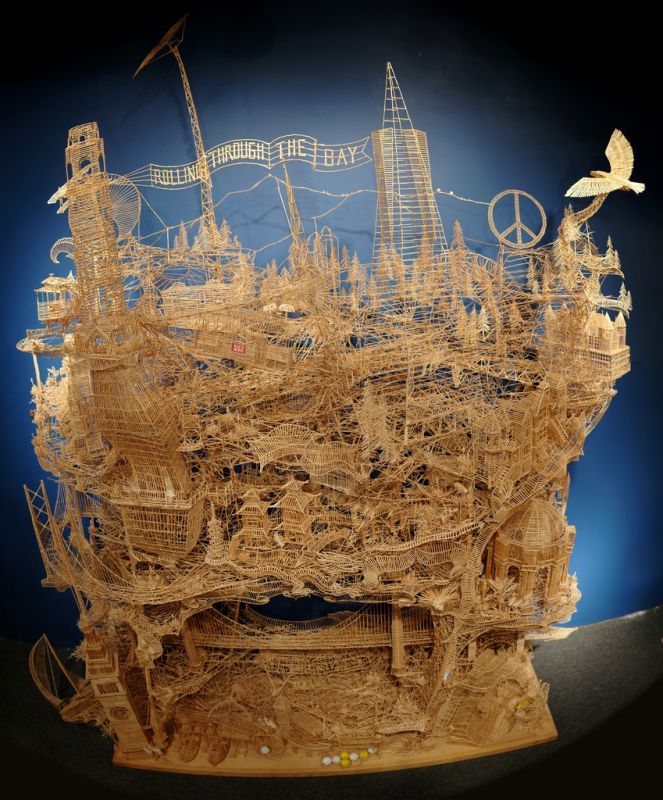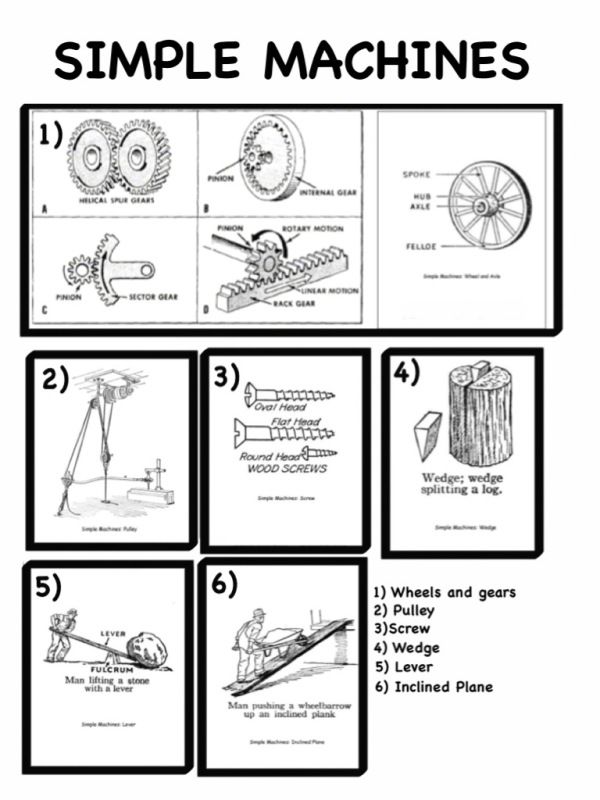
Both of these miniature Ferris wheels are made entirely of toothpicks and white glue. The Ferris wheel on the left was created by inmates at San Quentin prison in the early part of the 20th century. It has a working motor and is on display, together with the rest of an inmate created miniature toothpick amusement park,at San Francisco's Museé Mecanique.
The Ferris wheel on the right was created by contemporary artist Scott Weaver. It is part of a giant toothpick sculpture representing the entire city of San Francisco.Weaver began the sculpture as a child, growing up in San Francisco, and added to it on and off for 35 years.

Here is a photograph of Scott Weaver's giant sculpture. It is made entirely of toothpicks and held together with white glue. Both works of art are kinetic sculptures, which means that they have moving parts.
The tetrahedron is the building block of this three dimensional design project. Composed of four identical triangles, it forms an extremely stabile structure.
STUDENT GALLERY
He is figuring out how to design a roof that doesn't collapse. Together we looked at geodesic domes. I reminded him of the arches, vaults and domes of Ancient Rome and Medieval Europe from his social studies class. We discussed forces, physics and engineering.
Miniature Playground by a 9 year old girl
Tower designed by a team of five 7th grade girls
Tower designed by an 8th grade girl
Miniature Roller coaster created from toothpicks by San Quentin Prison inmates, early 20th century. Museé Mecanique, San Francisco
Miniature Ferris Wheel Created by San Quentin Prison Inmates, Early 20th century. Museé Mecanique,
San Francisco
San Francisco
Miniature amusement park ride, created by San Quentin Prison Inmates, early 20th century. Museé Mecanique,
San Francisco
San Francisco
PRINTABLE WORKSHEETS
SOMETHING TO THINK ABOUT..,
Both Scott Weaver's toothpick sculpture and the toothpick amusement park created by San Quentin inmates have moving parts. Weaver's creation uses gravity to move the balls through the maze of tracks. The San Quentin sculpture uses electric motors. A sculpture with moving parts is known as a kinetic sculpture. Kinetic sculptures can be powered by sunlight,wind, gravity, electricity or even a person turning a crank. The movie below shows a kinetic sculpture powered only by the wind.
PHOTOGRAPHS OF SCOTT WEAVER'S TOOTHPICK SCULPTURE, "ROLLING THROUGH THE BAY"
For related art projects, lessons and information, please see my blog post on the basic elements of three dimensional form: http://thehelpfulartteacher.blogspot.com/2010/12/basic-elements-of-three-dimensional.html
Follow up activity: Do an 'earthquake' test on your towers by placing them on a pan of jello and tapping the sides. Which buildings stay up? Which buildings collapse? How can they be redesigned?
COMMON CORE MATH STANDARDS THAT CAN BE APPLIED TO THIS ART LESSON:
Apply geometric methods to solve design problems CCSS.Math.Content.HSG-MG.A.3 e.g., designing an object or structure to satisfy physical constraints or minimize cost.
Apply geometric methods to solve design problems CCSS.Math.Content.HSG-MG.A.3 e.g., designing an object or structure to satisfy physical constraints or minimize cost.

































































